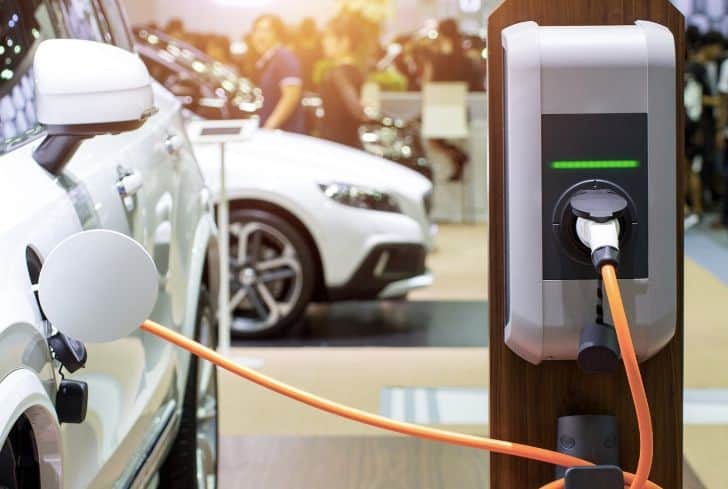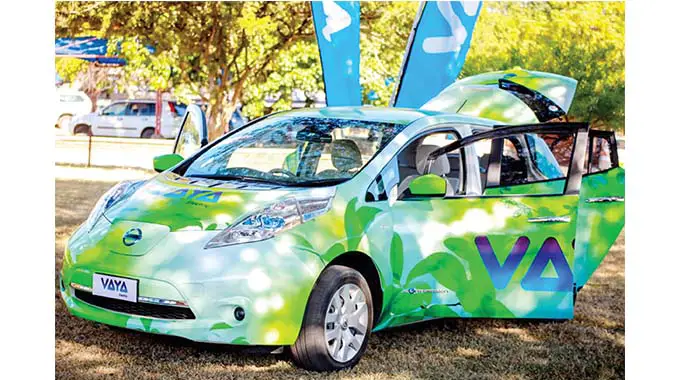Green line to replace the yellow lines in vehicles on African rods.
Green line to replace the yellow lines in vehicles on Africa


Electric vehicles start to disrupt the taxi industry, few years ago the cab-hailing apps upended the market and make transportation cheaper and safer, and now getting greener.
i) Kenya
Recently Nopea Ride, a Kenyan electric taxi fleet service, opened a new charging station at the village market. This is the fifth charging station to be put up by the company, there are other charging stations at The Hub Karen, Thika Road Mall, Two Rivers, and the JKIA
The company has more than 60 fleets of electric taxis and plans to have more by the end of 2021. The electric fleet is giving Nopea a competitive edge over the gasoline vehicles that dominate the market.
“To ensure we not only offer environmentally friendly but also wallet-friendly rides, we benchmark our prices regularly with other similar vehicles (size and quality) in Nairobi,” it says on its website.
Unlike Uber, Bolt, and LittleCab, Nopea cars are owned and operated by the company, with the revenues split 75 percent ( to the driver) and 25 percent (to Nopea) on all NopeaRide trips. The Nopea ride drivers enjoy free charging at the stations. The company has launched another service called Nopea Xpress which is the first delivery service with a fully electric vehicle fleet in Africa, allowing sending packets emissions-free.
ii) South Africa
Bolt announced in October that it will roll out electric cabs in South Africa. It came four months after the firm introduced e-bike food delivery services in that market.
Bolt’s regional director for Africa and the Middle East, Paddy Partridge says they are looking to roll out a green taxi category in South Africa in the next few months, and plan to roll out green categories in other African markets.
Bolt has operations in Johannesburg, Pretoria, Polokwane, Cape Town, Durban, Pietermaritzburg, Port Elizabeth, Knysna, Mossel Bay, George, and Plettenberg Bay.
EVs make business sense in Africa, and especially in Kenya where fuel prices are increased arbitrarily. Taxi drivers and owners of electric or hybrid vehicles enjoy better profit margins and longer mileage per car servicing.
iii) Zimbabwe
In May 2020, Vaya Africa, a ride-hail mobility venture founded by Zimbabwean mogul Strive Masiyiwa, unveiled an electric cab service and charging network in Zimbabwe, with plans to expand across the continent.
The South Africa-headquartered company acquired a fleet of Nissan Leaf EVs, just as Nopea and Bolt had done, and developed its solar-powered charging stations. Meanwhile, e-mobility firms are finally introducing cab sharing services, a key element of the business in other markets but until now not available in African markets, to reduce both passenger fares and traffic congestion.
Late last month, Uber launched “Chapchap Share” allowing two people heading in the same direction to board one ride. When you share your ride with another rider heading in the same direction, you can save up to 30 percent on your Chapchap trip. If no rider is found to share with customers you’ll still save 5 percent of your regular Chapchap fare, read an Uber notification in part.
By sharing and moving more people in fewer cars you’ll also help reduce congestion and lower carbon emissions in your city. Remember, you can only order Chapchap Share if you are travelling by yourself.
To make sure pick-ups and drop-offs don’t interrupt individual schedules, a passenger will only be traveling with up to one rider heading in the same direction as them – and no more than one stop.
Both shouldn’t “arrive more than 5 to 10 minutes later than a regular Chapchap ride so that you can get going with ease” according to Uber.
According to Munich-based international management consultancy firm, Roland Berger, the overall global car market will remain ownership-driven – with owned vehicles accounting for 98 percent of all vehicles in 2020 and a predicted 96 percent in 2025 – but a shift is likely to occur in new car sales.
The new sales will shift strongly toward new mobility concepts, representing an expected 13 per cent of new sales in 2020, rising to 20 per cent in 2025,” read its industry report in part.
The company estimate that the number of percent-sharing drivers will grow rapidly to 20 percent in 2025, reaching around 57 million. This represents a compound annual growth rate (CAGR) of 13 percent.
Source:
i) Techcabal (2021) Green is the new yellow as more African taxis turn electric




